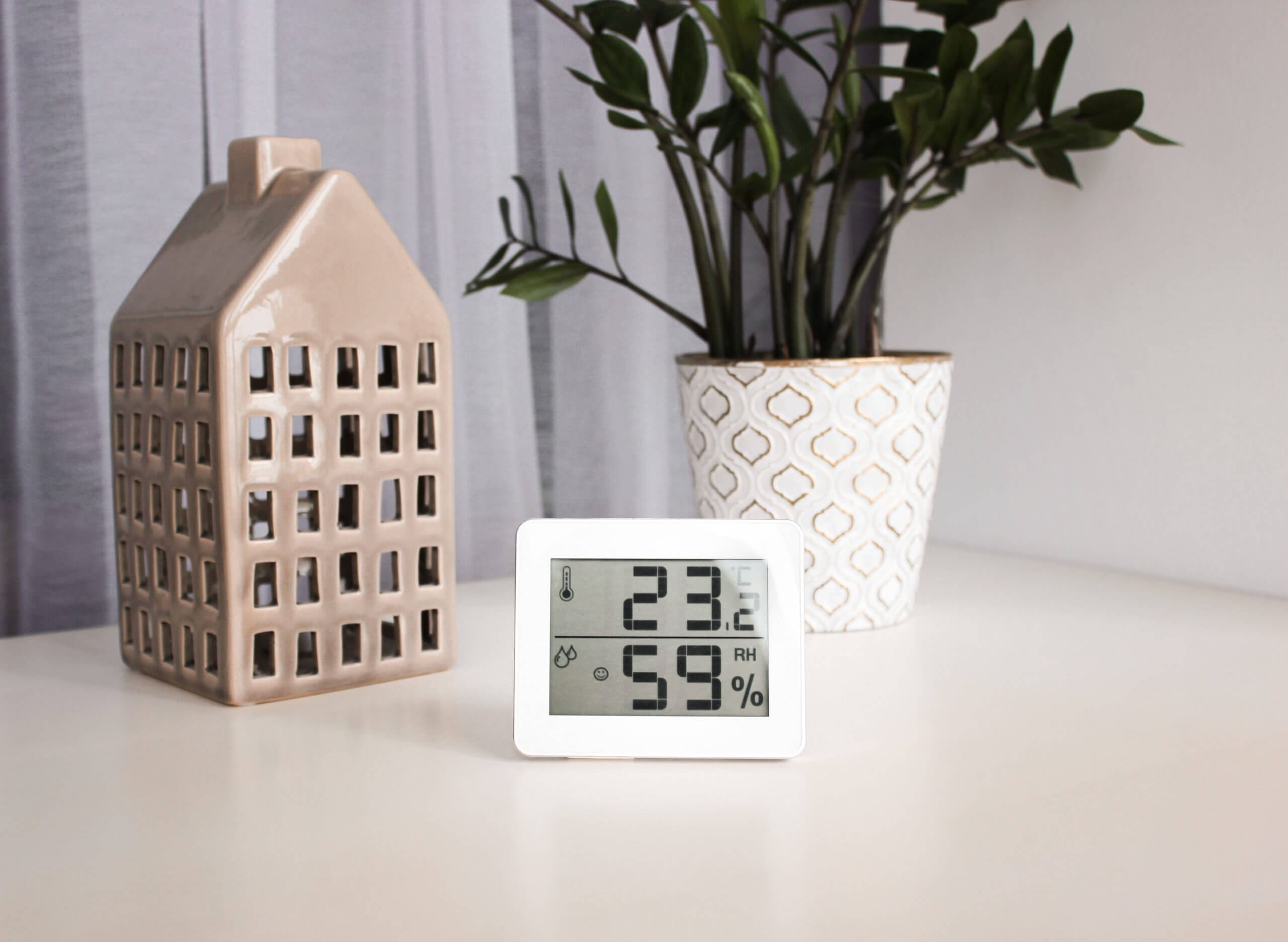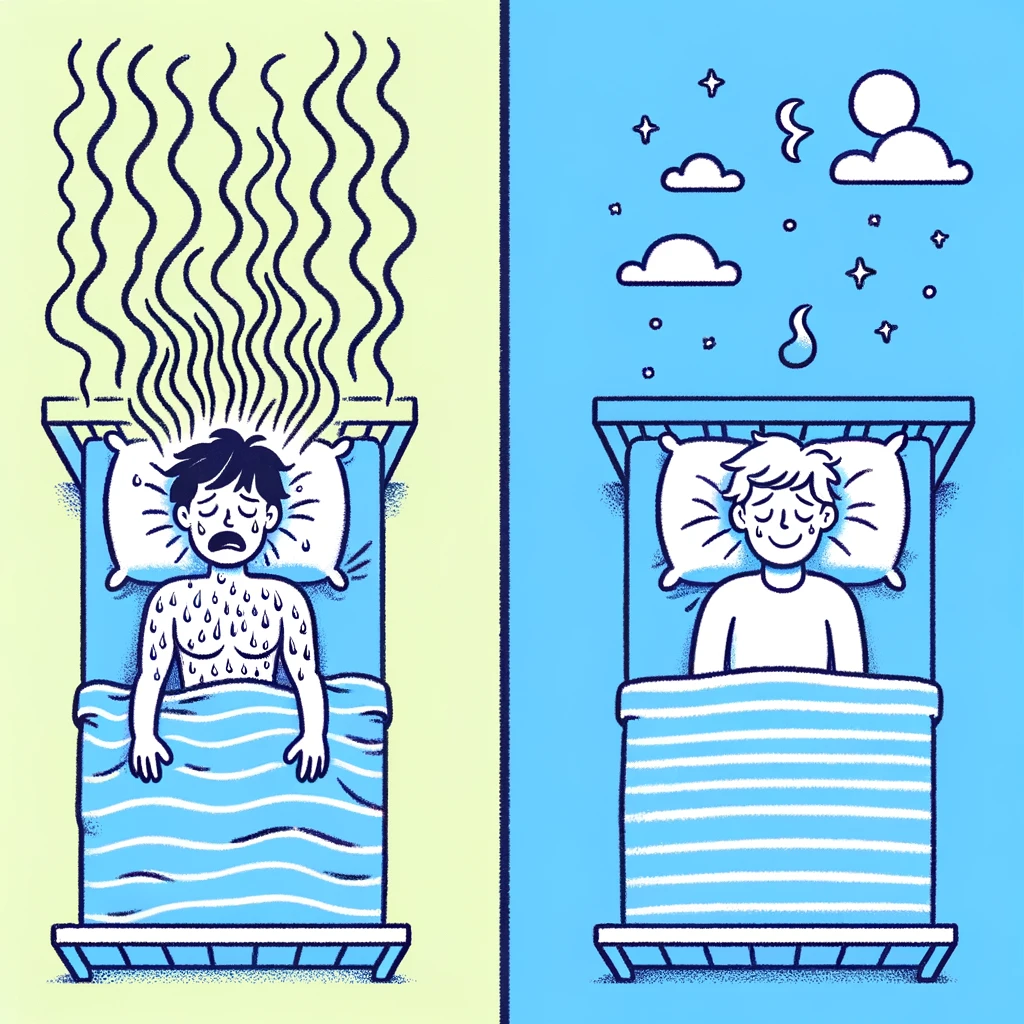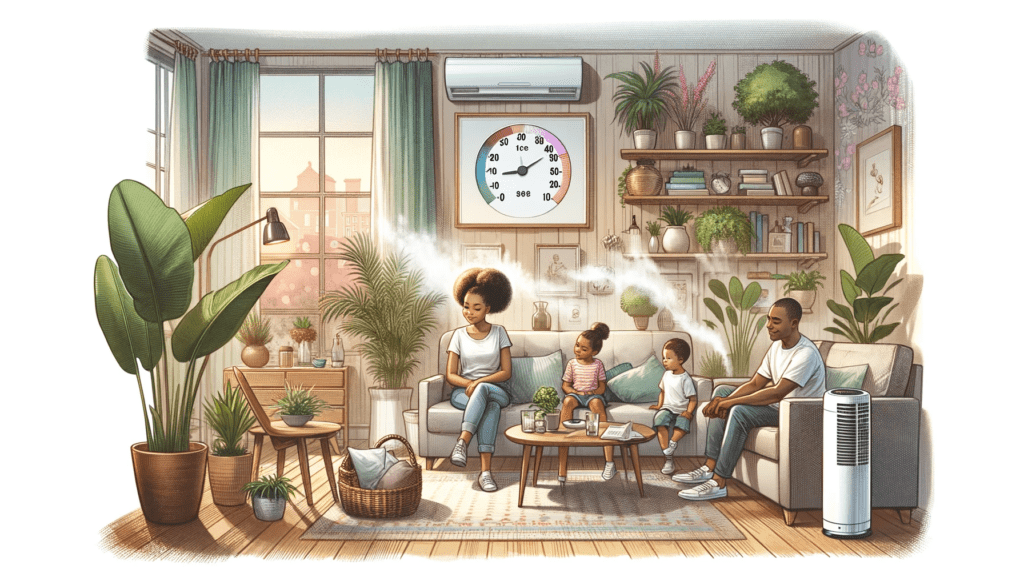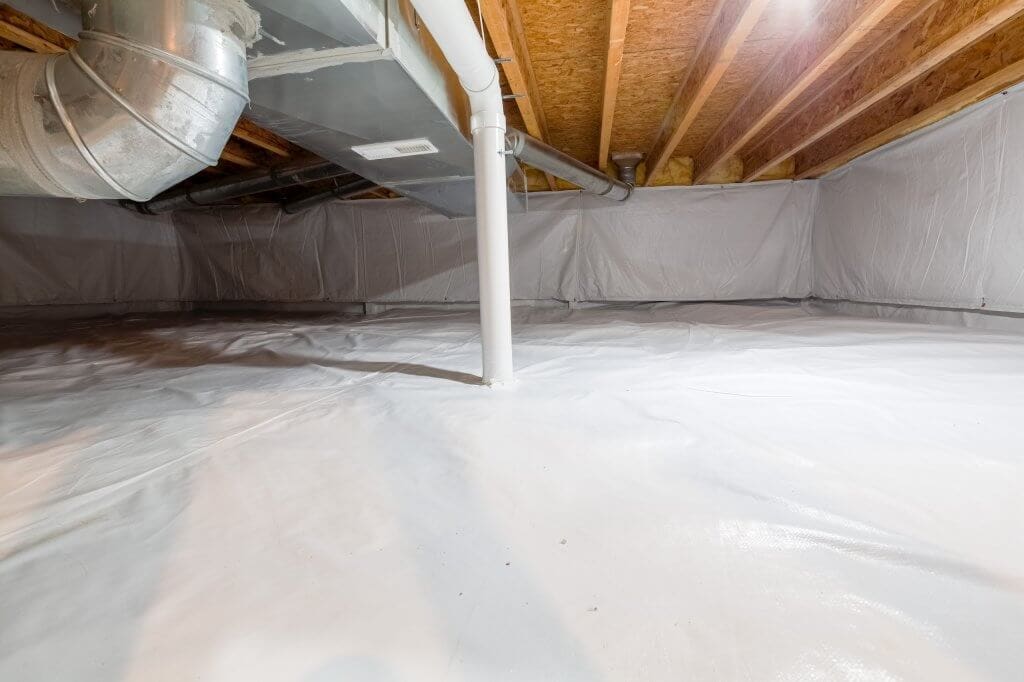Ensuring your home’s indoor humidity levels are within the ideal range benefits you and your family’s health and wellness. Striking the perfect balance between too much humidity and too little humidity has a positive impact on your home’s quality as well.
So, what is that ideal range? Indoor humidity levels should fall between 40 to 60%. This quick guide will help you assess whether your space’s indoor humidity levels are too high or too low so that you can take steps to address any imbalances.
Telltale Signs of High Humidity Levels
High humidity indoors is caused by excess moisture in the air. Rainfall, the location of your property and inadequate ventilation are the most likely culprits of high humidity. It goes to show just how much affects indoor humidity levels. It’s also important to remember that both warm and cool climates can be affected by excess humidity. So, don’t assume that your home isn’t at risk of high humidity just because you get to enjoy the sunshine!
One of the biggest signs that your home is suffering from high humidity levels is regularly finding dew or condensation on windows. Condensation should not be on the inside of your home’s windows. A healthy humidity level will only cause a tiny amount along the edges of your window frame, if any. Anything more on the inside window or door likely indicates a humidity issue.
Finding mold or moisture build-up on your ceilings, walls, or inside storage areas (could appear as dark spots!) is also a common consequence of excess humidity. High humidity is harmful to your overall health and respiratory system. It’s very important to address an imbalance quickly. If you’re not sleeping well, having difficulty breathing or getting sick more often, then you need to think about the air you’re breathing and make adjustments. Increased levels of moisture help fungus and nasty bacteria grow, which can cause the aforementioned symptoms.
Ways to Identify Low Humidity Levels
Whilst high humidity can cause almost-immediately noticeable effects like condensation and mold growth, low humidity levels are generally more difficult to identify. Nevertheless, it’s equally important that you monitor your home for low humidity. This is because dry air can also cause respiratory infections and encourage viruses to grow.
If your home doesn’t have enough moisture in the air, the first change you’ll notice is the way you feel. Dry air is incredibly frustrating to occupants. Drier air irritates the skin, causing annoying symptoms like itchiness and skin cracking. A lack of moisture in the air also leads to breathing difficulties. So, if you notice yourself coughing, suffering from a sore throat or from asthma flare-ups, your home might have low indoor humidity.
The home can also become a victim of low humidity itself. Too little moisture in the air can cause damage. Surfaces like wooden door frames, wood floors and countertops will shrink and warp. Similarly, plaster can crack which damages painted surfaces and wallpaper. Repairing the damage caused by dry air and low humidity is time-intensive and costly. This is especially true if problems are ignored for too long. It’s important to address them early to keep the issues from worsening.
How to Test Your Home’s Humidity Level
When you’ve identified some of the above signs in your home but still aren’t sure that poor air quality is the culprit, you can use a simple test. To conduct an ice cube test, all you need to do is place two to three ice cubes in a glass and fill it with water. Wait roughly four minutes. At this point, if you cannot see moisture on the outside of the glass, then the air in your home might be too dry. If water condenses and forms droplets, however, it can indicate that humidity levels are too high.
This test is only intended as a quick check or a starting point. Considering the number of potential health effects and home quality issues, it’s important to request the help of an indoor air quality expert. Hiring a professional means they can not only help regulate your home’s humidity levels and advise if system upgrades are needed, but they will conduct routine checks. This will evaluate the home for a plethora of other air quality hazards and problems.
Perfecting Your Home’s Humidity Range
Once you’ve identified that your home isn’t within the ideal humidity range, you should make a plan to regulate the levels as quickly as possible. The exact fix you need will depend on whether your space is suffering from excess humidity or a lack of humidity:
Dehumidifiers
If you have high humidity, a whole-home dehumidifier helps remove excess moisture from the air. We suggest whole-home systems because they actively reduce moisture levels in all the rooms inside your home so there’s no need to buy more than one, as was common in the past.
A whole-house dehumidifier is installed directly into your home’s HVAC system, so it’s a low-maintenance and low-worry upgrade. Just make sure you choose the right dehumidifier for the size of your home and existing ductwork. Modern dehumidification systems even include upgrades like remote room-by-room control and the power to control air flow into a particular area of the home.
Humidifiers
On the flip side, if the air in your space is too dry, a humidification system helps add needed moisture to the air supply. The most affordable and effective way to do this is to upgrade to a whole-home humidifier. Like dehumidifiers, the system is installed directly to the HVAC system. The humidifier will gently increase the moisture level in your home and actively regulate the space to keep it at the optimum humidity level. A whole-home humidifier helps occupants breathe easier and will also prevent furniture, walls and door frames from damage.
Optimize Your Health and Home by Achieving the Ideal Indoor Humidity Levels
Maintaining the ideal humidity range of 40-60% in your home will reduce the chances of your family falling ill, suffering respiratory problems or getting stuck with a persistent cough. It will also help protect your home from moisture damage and drying effects like warping.
Use the tips in this post to evaluate your home’s indoor humidity levels. If you or your loved ones are suffering from a number of the symptoms or it’s clear that your space doesn’t fall within the ideal range, we can put you in touch with an IAQ expert!. We want to help everyone breathe good high-quality clean air. We also have humidifier and dehumidifier recommendations that can optimize your living and working spaces.






